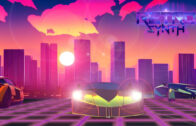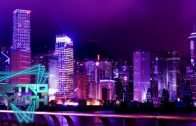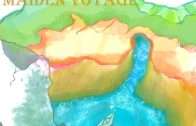What is RetroSynth?
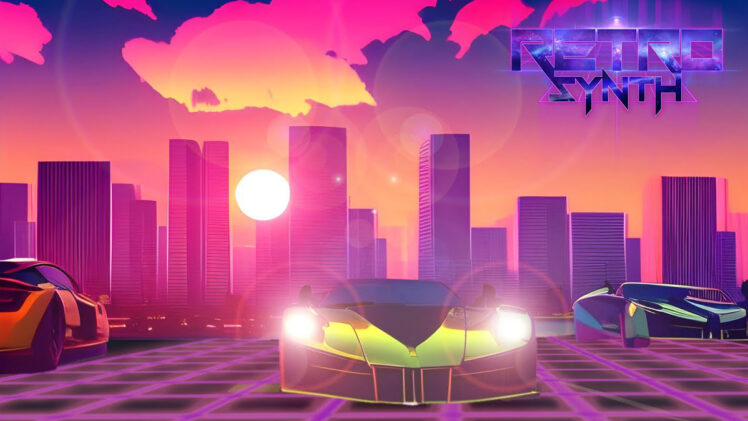
What is RetroSynth
Written by: Dan Eachus
Introduction
RetroSynth (also called synthwave, outrun, retrowave, or futuresynth[5]) is an electronic music microgenre that is based predominately on the music associated with action, science-fiction, and horror film soundtracks of the 1980s.[2] Other influences are drawn from that decade’s art and video games.[3] RetroSynth Synthwave musicians often espouse nostalgia for 1980s culture and attempt to capture the era’s atmosphere and celebrate it.[7]
The genre developed in the mid-to late 2000s through French house producers such as Daft Punkl, as well as younger artists who were inspired by the 2002 video game Grand Theft Auto: Vice City. Other reference points included composers John Carpenter, Jean-Michel Jarre, Vangelis (especially his score for the 1982 film Blade Runner), and Tangerine Dream. RetroSynth Synthwave reached wider popularity after being featured in the soundtracks of the 2011 film Drive (which included some of the genre’s best-known songs) and the 2010s Netflix series Stranger Things.
Characteristics and Related Terms
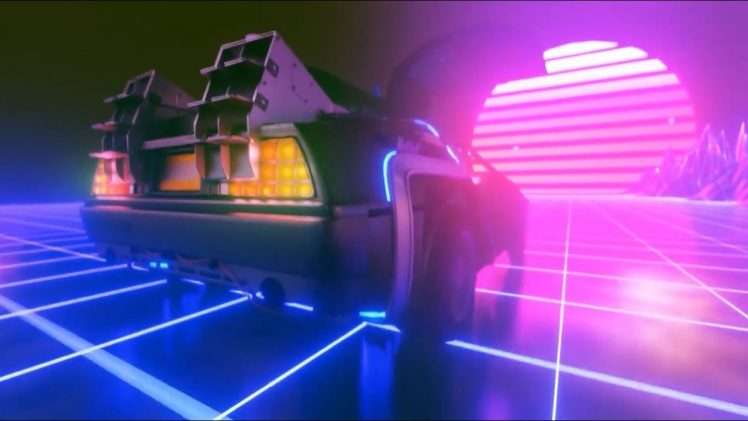
RetroSynth Synthwave is a microgenre[8] of electronic music[1] that draws predominantly from 1980s films, video games, and cartoons,[9] as well as composers such as John Carpenter, Jean-Michel Jarre, Vangelis, and Tangerine Dream.[10][11][12][text–source integrity?] Other reference points include electronic dance music genres including house, synth, and nu-disco.[13] It is primarily an instrumental genre, although there are occasional exceptions to the rule.[14] Common tempos are between 80 and 118 BPM, while more upbeat tracks may be between 128 and 140 BPM.[15]
“Outrun” is a synonym of RetroSynth synthwave that was later used to refer more generally to retro 1980s aesthetics such as VHS tracking artifacts, magenta neon, and gridlines.[14] The term comes from the 1986 driving arcade game Out Run, which was known for its soundtrack that could be selected in-game.[16] According to musician Perturbator (James Kent), outrun is also its own subgenre, mainly instrumental, and often contains 1980s clichéd elements in the sound such as electronic drums, gated reverb, and analog synthesizer bass lines and leads – all to resemble tracks from that time period.[17]
Other subgenres include dreamwave, darksynth, and scifiwave.[6] Journalist Julia Neuman cited “outrun”, “futuresynth”, and “retrowave” as alternative terms for RetroSynth synthwave[5] while author Nicholas Diak wrote that “retrowave” was an umbrella term that encompasses 1980s revivalism genres such as synthwave and vaporwave.[14]
Origins
RetroSynth Synthwave originates from the mid-2000s[18] or late 2000s.[4] Diak traced the genre to a broader trend involving young artists whose works drew from their childhoods in the 1980s. He credited the success of the 2002 video game Grand Theft Auto: Vice City with shifting “attitudes toward the ’80s… from parody and ambivalence to that of homage and reverence”, leading directly to genres such as RetroSynth, synthwave and vaporwave.[14]
Among the first synthwave artists were the French acts David Grellier (College), Kavinsky, M83, and Justice. These early artists began creating music inspired by famous 1980s score composers; music which was, at the time, largely associated with French house.[5] Other key reference points for early synthwave included the 1982 film Blade Runner (both the soundtrack and the film itself), 8- and 16-bit video games, 1980s jingles for VHS production companies, and television news broadcasts and advertisements from that era.[4]
Popularity and Spin-offs
In the early 2010s, the RetroSynth synthwave soundtracks of films such as Drive and Tron: Legacy attracted new fans and artists to the genre.[6] Drive featured Kavinsky’s “Nightcall” and, with College, “A Real Hero“, which catapulted RetroSynth synthwave into mainstream recognition and solidified its stature as a music genre.[4] The genre’s popularity was furthered through its presence in the soundtracks of video games like Far Cry 3: Blood Dragon, as well as the Netflix series Stranger Things, which featured RetroSynth synthwave pieces that accommodated the show’s 1980s setting.[4] Nerdglow‘s Christopher Higgins cited Electric Youth and Kavinsky as the two most popular artists in RetroSynth synthwave in 2014.[19]
In the mid-2010s, fashwave (a portmanteau of “fascist” and “synthwave”)[20] emerged as a largely instrumental fusion genre of synthwave and vaporwave, with political track titles and occasional soundbites, such as excerpts of speeches given by Adolf Hitler,[21] The phenomenon was described as self-identified fascists and alt-right members appropriating vaporwave music and aesthetics.[21][22] It was popularized in 2016 by Daily Stormer founder Andrew Anglin, who touted synthwave as the “Whitest music ever” and “the spirit of the childhoods of millenials [sic]”.[23] Elsewhere, there was a growing trend of Russian synthwave musicians whose work espoused nostalgia for the Soviet Union, sometimes described as “Sovietwave“.[24]
RetroSynth Synthwave remained a niche genre throughout the 2010s. Writing in 2019, PopMatters journalist Preston Cram said, “Despite its significant presence and the high level of enthusiasm about it, RetroSynth synthwave in its complete form remains a primarily underground form of music.”[4] He added that “Nightcall” and “A Real Hero” remained “two of only a small number of synthwave songs produced to date that widely known outside the genre’s followers.”[4] In 2020, “Blinding Lights“, a synthwave song by the Weeknd,[25] topped US record charts, the first song to do so during the COVID-19 pandemic.[26]
Synthwave
Synthwave is a genre of electronic music that emerged in the late 2000s and early 2010s. It is characterized by its use of vintage synthesizers and drum machines to create a sound that evokes the nostalgia of 1980s pop culture, particularly science fiction and action movies, video games, and television shows.
The music often features bright, neon-colored artwork and a retro-futuristic aesthetic, drawing inspiration from the visual style of the 1980s. It typically has a strong emphasis on melody, with catchy hooks and memorable synth lines, and often incorporates elements of other genres such as rock, funk, and disco.
Synthwave has gained a significant following in recent years, with artists from around the world producing music in the genre and fans embracing the nostalgic, futuristic sound. Some of the most popular synthwave artists include Kavinsky, The Midnight, and Gunship.
See also
- The Rise of the Synths – 2019 RetroSynth synthwave documentary featuring John Carpenter[27]
- 1980s in music
- Cyberspace
References
- ^ Jump up to:a b Robert (23 September 2016). “On The Synthwave Genre and Video Games”. Surreal Resolution. Retrieved 17 January 2017.
- ^ Jump up to:a b c Hunt, Jon (9 April 2014). “We Will Rock You: Welcome To The Future. This is Synthwave”. l’etoile. Archived from the original on 11 July 2017. Retrieved 18 May 2015.
- ^ Jump up to:a b c Neuman, Julia (June 23, 2015). “A Retrowave Primer: 9 Artists Bringing Back the ’80s”. MTV Iggy. Archived from the original on June 23, 2015. Retrieved June 23, 2015.
- ^ Jump up to:a b c d e f g h i Cram, Preston (2019-11-25). “How Synthwave Grew from a Niche ’80s Throwback to a Current Phenomenon”. Popmatters. Retrieved 2019-12-05.
- ^ Jump up to:a b c d e Neuman, Julia (July 30, 2015). “The Nostalgic Allure of ‘Synthwave’”. New York Observer. Retrieved May 16, 2016.
- ^ Jump up to:a b c d e Young, Bryan (25 March 2015). “Synthwave: If Tron and Megaman had a music baby”. Glitchslap.com. Retrieved 2015-05-19.
- ^ Calvert, John (13 October 2011). “Xeno and Oaklander – Sets & Lights”. Drowned in Sound. Retrieved 8 June 2015.
- ^ Maxwell, Dante (September 20, 2019). “Music Microgenres: A Brief History of Retrowave, Acid House, & Chillhop”. Zizacious.
- ^ Christopher Higgins (2014-07-29). “The 7 Most Essential Synthwave Artists”. Nerdglow.com. Retrieved 2015-05-18.
- ^ Hunt, Jon (9 April 2014). “We Will Rock You: Welcome To The Future. This is Synthwave”. l’etoile. Archived from the original on 11 July 2017. Retrieved 18 May 2015.
- ^ Lambert, Molly (2016-08-04). “Stranger Things and how Tangerine Dream soundtracked the 80s”. MTV.com. Retrieved 2016-08-28.
- ^ “The Nostalgic Allure of ‘Synthwave’”. Observer. 2015-07-30. Retrieved 2019-02-09.
- ^ Skullet, Iron (2018-03-01). “What is Synthwave? 2018 Edition • Iron Skullet”. Iron Skullet. Retrieved 2019-02-09.
- ^ Jump up to:a b c d Wetmore, Jr. 2018, p. 31.
- ^ “Synthwave: 5 Production Essentials | ModeAudio Magazine”. ModeAudio. Retrieved 2020-04-15.
- ^ Lambert, Molly (2016-08-04). “Stranger Things and how Tangerine Dream soundtracked the 80s”. MTV.com. Retrieved 2016-08-28.
- ^ McCasker, Toby (2014-06-22). “Riding the Cyber Doom Synthwave With Perturbator | NOISEY”. Noisey.vice.com. Retrieved 2015-05-19.
- ^ Neuman, Julia (July 30, 2015). “The Nostalgic Allure of ‘Synthwave’”. New York Observer. Retrieved May 16, 2016.
- ^ Christopher Higgins (2014-07-29). “The 7 Most Essential Synthwave Artists”. Nerdglow.com. Retrieved 2015-05-18.
- ^ Hann, Michael (December 14, 2016). “‘Fashwave’: synth music co-opted by the far right”. The Guardian.
- ^ Jump up to:a b Bullock, Penn; Kerry, Eli (January 30, 2017). “Trumpwave and Fashwave Are Just the Latest Disturbing Examples of the Far-Right Appropriating Electronic Music”. Vice. Retrieved February 6, 2017.
- ^ Farrell, Paul (2018-05-18). “Fashwave: 5 Fast Facts You Need to Know”. Heavy.com. Retrieved 2020-03-05.
- ^ Hermansson, Patrik; Lawrence, David; Mulhall, Joe; Murdoch, Simon (2020). The International Alt-Right: Fascism for the 21st Century?. Taylor & Francis. p. 96. ISBN 978-0-429-62709-5.
- ^ Luhn, Alec (July 29, 2015). “Russia’s musical new wave embraces Soviet chic”. The Guardian.
- ^ The Weeknd’s ‘Blinding Lights’ Is Yearning Synthwave – UPROXX
- ^ Why the Weeknd’s “Blinding Lights” Is the First Chart Topper of the Coronavirus Era – Slate Magazine
- ^ “Doc’n Roll Film Festival – The Rise of The Synths”. www.docnrollfestival.com. Retrieved 2019-09-30.
Bibliography
- Wetmore, Jr., Kevin J., ed. (2018). Uncovering Stranger Things: Essays on Eighties Nostalgia, Cynicism and Innocence in the Series. McFarland. ISBN 978-1-4766-7186-4.
External Links
- Shah, Neil (January 28, 2019). “Synthwave, the Sound of an ’80s Childhood, Goes Mainstream”. Wall Street Journal. ISSN 0099-9660. Retrieved 2019-11-29.
- O’Neal, Sean (August 2, 2016). “Stranger Things’ score is a gateway into synthwave”. A.V. Club.
